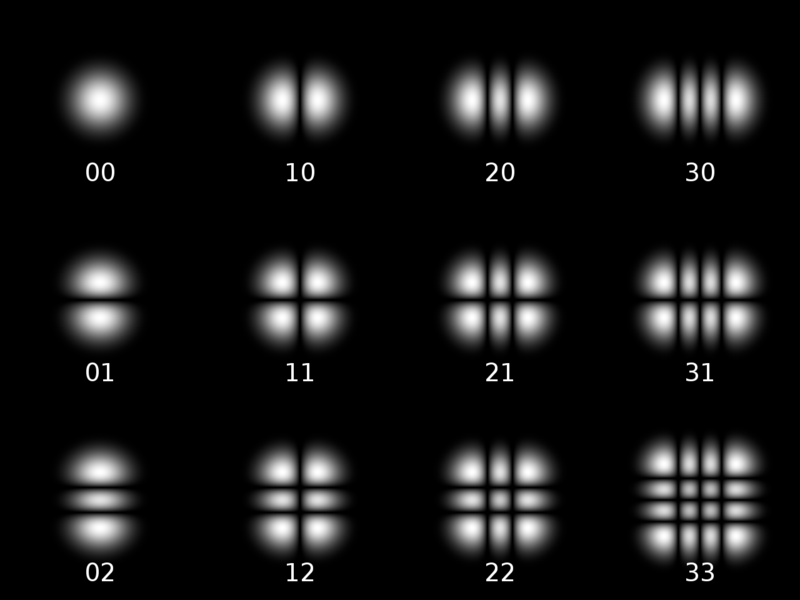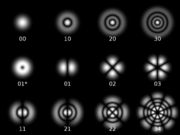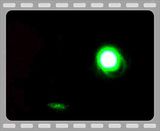- Joined
- Nov 7, 2008
- Messages
- 5,725
- Points
- 0
Hi
I've been reading posts on this forum for some time, and I've noticed that there seems to be some confusion about what mode hopping is, and how it happens
I created this thread to (hopefully) shed some light on the concept of mode-hopping and transverse emission modes in general.
Mode-hopping occurs due to many complex factors which cannot be adequately described here. The two main causes of mode-hopping are temperature and unstable power sources (like low batteries or using HiMH/NiCd rechargeable batteries in a laser pointer). With lab-style lasers these effects are countered by using a well-designed power supply and utilizing themoelectric (TEC) cooling in the laser head itself.
Laser pointers obviously lack room for these types of control mechanisms, however mode-hopping generally occurs in cheap higher-powered green laser pointers (>10mW and up). The reason for this is that in most cheap laser pointers the manufacturers use modules rated for 5mW or less and just turn them up (internally) to whatever power level they want. While this is a horrible practice for many reasons, the main two are that it drastically shortens the lifetime of the laser and it causes mode-hopping.
To elaborate a bit on laser emission modes: There are several different types of beam modes which can be produced by a DPSS laser. Typically, you want to see a clean beam with a single spot. Whenever another mode takes over (hops), then the beam can change to a large beam with 2 or more spots where it is projected. Also it can make the beam appear blurry and distended.
Some examples of various emission modes can be seen on Wikipedia here.
For the figures in the Wikipedia article picture a beam shining on a wall. The spot(s) produced are what the figure is showing.
I would hesitate to say that a mode-hopping laser is defective since these modes occur naturally in every DPSS laser. Whether or not it hops frequently is how I would determine if it is defective. A laser pointer that hops due to low batteries is not defective, it just needs new batteries. A laser that mode-hops when it is warm just needs to be operated on a duty cycle (a requirement that manufacturers rarely state).
To make sure that the dominant mode is TEM00, or the clean beam I just described, the manufacturer must ensure that the internal parts of the laser are precisely aligned and properly temperature regulated. This is usually not done with cheap laser pointers since it requires a great deal of time and expense. More expensive laser pointers are usually aligned better and built with better quality components, so it is less common (but not impossible) to see mode-hopping in these.
Hope this helps people better understand mode-hopping.
For loads more information on lasers of all types,
See: "Sam's Laser FAQ"http://www.repairfaq.org/sam/laserfaq.htm
Here's some examples of transverse modes:


I've been reading posts on this forum for some time, and I've noticed that there seems to be some confusion about what mode hopping is, and how it happens
I created this thread to (hopefully) shed some light on the concept of mode-hopping and transverse emission modes in general.
Mode-hopping occurs due to many complex factors which cannot be adequately described here. The two main causes of mode-hopping are temperature and unstable power sources (like low batteries or using HiMH/NiCd rechargeable batteries in a laser pointer). With lab-style lasers these effects are countered by using a well-designed power supply and utilizing themoelectric (TEC) cooling in the laser head itself.
Laser pointers obviously lack room for these types of control mechanisms, however mode-hopping generally occurs in cheap higher-powered green laser pointers (>10mW and up). The reason for this is that in most cheap laser pointers the manufacturers use modules rated for 5mW or less and just turn them up (internally) to whatever power level they want. While this is a horrible practice for many reasons, the main two are that it drastically shortens the lifetime of the laser and it causes mode-hopping.
To elaborate a bit on laser emission modes: There are several different types of beam modes which can be produced by a DPSS laser. Typically, you want to see a clean beam with a single spot. Whenever another mode takes over (hops), then the beam can change to a large beam with 2 or more spots where it is projected. Also it can make the beam appear blurry and distended.
Some examples of various emission modes can be seen on Wikipedia here.
For the figures in the Wikipedia article picture a beam shining on a wall. The spot(s) produced are what the figure is showing.
I would hesitate to say that a mode-hopping laser is defective since these modes occur naturally in every DPSS laser. Whether or not it hops frequently is how I would determine if it is defective. A laser pointer that hops due to low batteries is not defective, it just needs new batteries. A laser that mode-hops when it is warm just needs to be operated on a duty cycle (a requirement that manufacturers rarely state).
To make sure that the dominant mode is TEM00, or the clean beam I just described, the manufacturer must ensure that the internal parts of the laser are precisely aligned and properly temperature regulated. This is usually not done with cheap laser pointers since it requires a great deal of time and expense. More expensive laser pointers are usually aligned better and built with better quality components, so it is less common (but not impossible) to see mode-hopping in these.
Hope this helps people better understand mode-hopping.
For loads more information on lasers of all types,
See: "Sam's Laser FAQ"http://www.repairfaq.org/sam/laserfaq.htm
Here's some examples of transverse modes:


Last edited:




